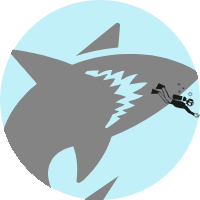¡Sí puedo! Can-Do Statement
Identify whether there is or there are different items based on spoken questions.
Note: The activities on this page are designed to promote active communication in Spanish. Your instructor may ask you to complete the activities in Canvas using a separate tool, such as video/voice recording or web-conferencing software. Even if the activities are not assigned as coursework, they can be used for individual practice and review.
 A. ¿Hay o no hay?
A. ¿Hay o no hay?
Look at the photo and say whether the item(s) mentioned is/are there.

Modelo: ¿Hay pizarras? (Sí, hay una pizarra. / Sí, hay pizarras. / No, no hay pizarras.)
 B. ¿Qué hay?
B. ¿Qué hay?
Take turns with a partner asking and answering the following questions about what is in your classroom.
Modelo:
- Estudiante 1: ¿Hay mesas?
- Estudiante 2: Sí, hay una mesa / Sí, hay mesas / No, no hay mesas.
- ¿Hay sillas?
- ¿Hay computadoras?
- ¿Hay puertas?
- ¿Hay pupitres?
- ¿Hay ventanas?
- ¿Hay mapas?
- ¿Hay banderas?
- ¿Hay mesas?
 C. ¿Qué hay? (Alternate)
C. ¿Qué hay? (Alternate)
Take turns with a partner asking and answering the following questions about what is in the classroom below.
Modelo:
- Estudiante 1: ¿Hay sillas?
- Estudiante 2: Sí, / No, no hay sillas
- Estudiante 1: ¿Cuántas sillas hay?
- Estudiante 2: Hay veinticinco sillas.
 |
 |
 D. ¿Qué hay en tu oficina?
D. ¿Qué hay en tu oficina?
You and your partner are now teachers and below is a picture of your office and your partner’s office. Take turns asking each other questions about the other person’s office.
Modelo:
- Estudiante 1: ¿Hay mapas?
- Estudiante 2: Sí, hay mapas / No, no hay mapas.
 |
 |
 E. Conferencia de biología
E. Conferencia de biología
You and your partner are planning an international biology conference. It is time to figure out where all the presentations will be held. Each of you has corresponded with half of the presenters and has been given half of the information about rooms at the conference center.
Instructions:
- Fill in the “Apuntes” table by checking off the items each of your presenters needs, as articulated in their email to you (in your inbox: “Recibidos”). Even if you don’t understand all the words in the email, try to figure out what the presenter is asking for.
- Tell your partner which equipment your first presenter needs, as well as the number of chairs the room should have. Your partner will check their list of available rooms and decide which one would be best for that presenter.
- Now your partner explains what their first presenter needs. Check your list of available rooms (“Tabla de capacidad”) to find the right room, and write the presenter’s name in the column to the right. They may need to spell out the name!
- Repeat for all presenters.
Click on the appropriate link below to see your half of the information (or download the pdf).
Estudiante 1
Estudiante 1: Recibidos (inbox)
Estudiante 1: Apuntes (Notes)
 |
 |
 |
 |
 |
 |
cuantas sillas? |
|
|
Alma Mar |
✓ | 6 | |||||
|
Denisse Núñez |
|||||||
|
Julia Duckworth-Clarke |
|||||||
|
Chet Frank |
|||||||
|
Helmut von Torkle |
Modelo: Alma Mar necesita (needs) una computadora y sillas para seis personas.
Estudiante 1: Tabla de capacidad
Modelo: En Sala 11 hay una computadora y un proyector. Hay doce sillas.
Estudiante 2
Estudiante 2: Recibidos (inbox)
Estudiante 2: Apuntes
 |
 |
 |
 |
 |
 |
cuantas sillas? |
|
|
Noah de la Rosa |
✓ | ✓ | 12 | ||||
|
Fen Guo |
|||||||
|
Joaquín Pereira |
|||||||
|
Nadja Petrov |
|||||||
|
Violeta Perez-Huerta |
Modelo: Noah de la Rosa necesita (needs) una computadora, un proyector, y sillas para doce personas.
Estudiante 1: Tabla de capacidad
Modelo: En Sala 21 hay un proyector y un reloj. Hay seis sillas.













